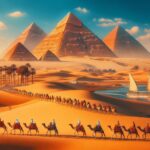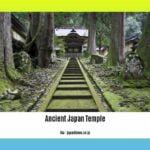Get ready to dive into the fascinating world of the ancient Mayans! From their mind-boggling temples to their complex beliefs, the Mayans left behind a legacy that still captivates us today. Hold on tight as we reveal 10 mind-blowing facts that will transport you back in time to uncover the secrets and wonders of this enigmatic civilization.
10 Facts About the Mayans
The ancient Maya civilization, thriving in Mesoamerica centuries ago, continues to fascinate us. We’re drawn to their impressive cities swallowed by jungles, their intricate calendars, and the enigma surrounding their disappearance. But how much do we really know about them? Here are 10 facts about the Mayans that might surprise you:
- They weren’t all about peace and love. While the Maya were known for their advancements in art, mathematics, and astronomy, they weren’t strangers to conflict. Warfare likely played a significant role in their society, and evidence suggests they practiced human sacrifice as a religious ritual, though the extent and reasons for it are still debated by scholars.
- They didn’t predict the world would end in 2012. Remember that whole 2012 doomsday prophecy? Yeah, that wasn’t actually a Mayan prediction. The Maya calendar, a sophisticated system more accurate than the European calendars of the time, didn’t end in 2012, it just started a new cycle. Think of it like flipping over to a new year on a calendar, not the world ending.
- By 900 AD, they were way ahead of the game. Imagine a society with a complex understanding of mathematics, astronomy, and a writing system centuries before Europeans arrived in the Americas. That’s the Maya. They were responsible for developing advanced concepts in these fields, demonstrating remarkable intellectual and cultural achievements.
- They gave us the concept of zero. And no, we’re not talking about the feeling of having an empty stomach. The Maya were one of the few civilizations worldwide to independently develop the concept of zero as a placeholder in their mathematical system. This innovation was a significant contribution to mathematics and is a testament to their intellectual prowess.
- Their calendar was seriously impressive. The Maya didn’t just have one calendar, they had several interwoven systems to track time! One of their calendars, known as the Long Count, spanned thousands of years and was incredibly accurate in predicting celestial events like eclipses.
- They didn’t just live in villages, they built sprawling cities. Think massive pyramids, temples, palaces, and plazas, all meticulously planned and constructed with advanced engineering techniques. Cities like Tikal and Chichén Itzá stand today as breathtaking reminders of their architectural achievements.
- They left their mark through their writing. The Maya developed a complex writing system known as hieroglyphics. Unlike our alphabet, Mayan hieroglyphs represent words or syllables and were often carved into stone or painted on pottery. While we’ve deciphered much of it, researchers are still working to understand its full complexity.
- They were skilled astronomers who looked to the stars. The Maya were avid skywatchers. Their understanding of celestial cycles, the movement of planets, and the ability to predict astronomical events like eclipses were central to their daily lives and religious practices. These observations allowed them to create sophisticated calendars and align their cities with the cosmos.
- Their religion was as complex as their calendars. The Maya believed in a pantheon of gods and goddesses who ruled over different aspects of the natural world and human experience. Religious rituals were integral to their society, with offerings, ceremonies, and even bloodletting rituals performed to maintain cosmic balance and honor their deities.
- Their disappearance is still a puzzle. Perhaps the biggest mystery surrounding the Maya is the decline of their major cities around 900 AD. While theories abound, from climate change and deforestation to overpopulation and warfare, the exact reasons for their civilization’s collapse remain uncertain.
5 More Mind-Blowing Facts About the Mayans
We’ve already scratched the surface of this awesome civilization, but buckle up because there’s so much more to discover about the Maya! Let’s dive into some seriously cool facts:
1. Mayan Math Whizzes and Stargazers!
These guys were seriously smart cookies. We’re talking next-level understanding of astronomy and mathematics. They developed a calendar system that was so precise; it puts our modern calendar to shame! This wasn’t just about keeping track of birthdays; it was deeply connected to their beliefs about the cosmos. Imagine figuring that out without telescopes and computers!
2. They Wrote Their Own Story (Literally!)
Forget emojis – the Mayans communicated through intricate hieroglyphics! These weren’t just pretty pictures; they were a sophisticated writing system that documented everything from their history and beliefs to their amazing scientific discoveries. It’s like they left us a giant puzzle to piece together, giving us glimpses into their fascinating world.
3. Master Builders of the Ancient World
Move over, pyramids of Giza – the Mayans had some serious architectural skills too! They didn’t just build houses; they created sprawling cities and towering pyramids that have stood the test of time. These structures weren’t just impressive to look at; they were designed with a deep understanding of astronomy and served as important religious centers.
4. More Than Just a Game
Remember those epic sports movies? Well, the Mayans had their own version – the Mesoamerican Ballgame! This wasn’t just about scoring points; it was a ritualistic event woven into the fabric of their culture. Imagine a game with such high stakes that it was connected to their beliefs about life, death, and the cosmos. Now that’s intense!
5. The Mystery of the Mayan Disappearance
Here’s the biggest head-scratcher – despite their incredible advancements, the Mayan civilization seems to have experienced a decline in their major cities around 900 AD. Historians and archaeologists are still trying to figure out exactly why. Was it climate change, warfare, disease, or maybe a combination of factors? It’s a puzzle that continues to fascinate researchers today.
3 Incredible Things the Mayans Achieved
We’ve already scratched the surface of the Mayan world, but now let’s dive a little deeper and unearth some of their coolest achievements!
1. Brain Power to Spare
Imagine trying to do math not with ten fingers, but with twenty! That’s what the Mayans did using their super cool vigesimal system. And they didn’t stop there! They were like the architects of their time, constructing jaw-dropping pyramids like those found at Chichén Itzá. Talk about an ancient skyscraper! And don’t even get me started on their knowledge of the stars. The Mayans were practically astronomy wizards, creating crazy-accurate calendars and understanding the movements of celestial objects way before telescopes existed. Did you know that the Hanging Gardens of Babylon were one of the Seven Wonders of the Ancient World? 10 interesting facts about the hanging gardens of babylon They were built by King Nebuchadnezzar II for his wife, Queen Amytis, and were described as a lush, green paradise in the middle of the desert.
2. Talking Through Time
Ever tried to decipher a secret code? Well, the Mayans had their own, but instead of numbers and letters, they used over 800 intricate symbols called hieroglyphs. These symbols were their way of writing and communicating, recording everything from their history and religious beliefs to their latest scientific discoveries. It’s like their very own ancient Instagram feed, but etched in stone!
3. City-States: The Original Independent Nations
Unlike other ancient civilizations that were ruled by one big empire, the Mayans liked to do things a little differently. They lived in independent city-states, each with its own leader who inherited their position. Think of it like having a bunch of different countries all living close to each other, each with its own government and way of life. This system, while maybe a little more complicated, allowed for a lot of unique cultures and traditions to flourish within the Mayan world.
What Makes the Mayans So Special?
The Mayans weren’t just another face in the crowd of ancient civilizations. These guys were the real deal. We’re talking next-level geniuses who made mind-blowing advancements in art, architecture, math, and astronomy – stuff that still blows people’s minds today. Let’s dive into what made them so unique:
- Time Travelers (Well, Almost): Imagine creating a calendar so accurate it could track time over thousands of years! The Mayans did just that. Their Long Count calendar wasn’t just about marking birthdays; it was a complex system that helped them understand cycles of time and history.
- Master Builders: Forget skyscrapers, the Mayans built entire cities with ingenious urban planning. We’re talking advanced water systems and towering pyramids that still stand tall today. These structures weren’t just impressive to look at; they were carefully designed to align with the stars and serve religious purposes.
- Zeroing In On Math: Long before Europeans were fumbling with Roman numerals, the Mayans had already figured out the concept of zero. They used a sophisticated number system that allowed them to make complex calculations, which comes in handy when you’re charting the cosmos!
- Starstruck Scientists: Speaking of the cosmos, the Mayans were obsessed with the stars. They meticulously tracked celestial movements and could predict eclipses and other astronomical events with surprising accuracy. Their observatories weren’t just about stargazing; they were centers of knowledge that helped them understand the universe and their place within it.
- Storytellers in Symbols: Imagine writing a story without using any letters. The Mayans did just that! They developed an intricate system of hieroglyphs – pictures that represented sounds, words, and ideas. This allowed them to record their history, beliefs, and even scientific discoveries for future generations.
- A Tapestry of Cultures: The Mayan civilization wasn’t a monolithic entity. It was a vibrant mix of different city-states, each with unique customs and traditions, spread across Mesoamerica. Think of it as a giant cultural tapestry, woven together by shared beliefs and a common heritage.
- The Beat Goes On: The Mayan civilization faced its share of challenges, just like any other. But here’s the thing: they adapted and persevered. Today, their descendants keep their rich cultural legacy alive through language, traditions, and a deep connection to their ancestors.
Unanswered Questions: What We’re Still Figuring Out
While we’ve learned a lot about the Mayans, there’s still so much we don’t know. For example, the exact reasons behind the decline of some major Mayan cities are still debated by historians. New discoveries are constantly being made, and archaeologists are using cutting-edge technology to uncover more secrets of this fascinating civilization. So, while we marvel at their accomplishments, let’s remember that the story of the Mayans is still being written.
A Glimpse into the Mayan Kitchen: What Did They Eat?
Picking up where we left off, let’s dive deeper into the Mayan menu! We know maize (what we call corn today) was like the bread and butter of their meals – they used it for everything! Imagine warm tortillas, tasty tamales—yum! But they didn’t stop there. Beans and squash were like the trusty sidekicks to their maize, making sure they got a balanced diet. Think of it like their version of a hearty meal.
Now, let’s talk fruits and veggies! The Maya were quite the gardeners, growing things like avocados, juicy tomatoes, and fiery chili peppers. They even enjoyed the rich flavor of cacao, turning it into a special chocolate drink. It probably wasn’t like the sugary treats we have today, but more like a bitter, energizing drink.
But hold on, there’s more! The Maya weren’t afraid to get their hands a little dirty. Hunting was a big part of their lifestyle, and they were skilled at catching deer, turkey, and rabbits. And let’s not forget about the bounty of the waters. Fishing provided them with fresh fish and shellfish, adding some variety to their plates.
The really cool thing is, archaeologists are still piecing together the full picture of the Maya diet. They’re finding clues all the time that suggest the Maya were even more creative in the kitchen than we originally thought. So, while we have a pretty good idea of their favorite foods, there might be some culinary surprises still waiting to be uncovered!
The Maya Collapse: Unraveling the Mystery of Their Decline
We’ve been talking about the decline of the Maya civilization, and it’s a story full of mystery. One of the biggest questions that comes up is, well, how many people are we talking about? How many Mayans actually died during this period? It’s tough to put an exact number on it, kind of like trying to count raindrops in a hurricane. But we can piece together some clues from history, archaeology, and science to get an idea of the scale of this event.
Imagine this: the Mayan lands, once lush and fertile, start drying up. Crops fail, hunger sets in, and people are weakened. This is where disease comes in – smallpox, measles, and other nasty bugs could have spread rapidly through a population that’s already on its knees. It’s a recipe for disaster.
As if that weren’t bad enough, resources were likely scarce. This probably caused conflicts between Mayan cities to become even more heated. Warfare may have broken out as groups fought over dwindling supplies and land. These weren’t just minor skirmishes either; we’re talking about battles that could leave entire settlements in ruins.
Now, add another layer to this: the Maya relationship with their environment. They were incredible farmers, but over time, clearing forests for agriculture and supporting a growing population could have taken a toll. This might’ve led to soil erosion, changes in rainfall, and even made those droughts we talked about even worse. It’s possible this contributed to the decline.
So, what was the aftermath of all this? Well, over a few centuries, the heart of the Maya civilization basically emptied out. Many of those magnificent cities we know about were abandoned, possibly by the 9th century CE. Scholars estimate that a significant portion of the Maya population disappeared during this time.
What’s important to remember is that even though this civilization faced a terrible fate, the Maya story didn’t end there. Their descendants are still very much here, keeping their culture and traditions alive in Central America. And the ruins? Those incredible pyramids, the intricate calendars, the advanced math – they all serve as a reminder of the Maya’s brilliance and resilience. They were much more than just a cautionary tale; they were a civilization that thrived for centuries and left a mark on the world that will never truly fade.
Turning Back the Clock: Just How Old is the Maya Civilization?
So, we’ve been talking about the Mayan civilization, those incredible architects, mathematicians, and astronomers. They didn’t just pop up overnight, you know. We’re talking about a culture that thrived for a seriously long time – think somewhere around 2,000 years! To put that in perspective, that’s longer than the Roman Empire existed!
Experts believe the Mayan civilization really started to take shape around 1,800 B.C. That’s when they started farming, building communities, and laying the groundwork for those awesome cities and pyramids we still marvel at today.
Of course, pinpointing the exact date a civilization truly “began” is always tricky. There’s always a period beforehand where things are developing, ideas are forming, and people are figuring things out. It’s like a slow burn before the big explosion.
And even though the Maya civilization experienced some major changes and challenges around the 9th century A.D., it wasn’t a complete vanishing act. Their descendants and culture have carried on, keeping their traditions and stories alive for centuries. Pretty amazing, right?
Keeping the Flame Alive: How Many Mayans are There Today?
The Maya weren’t just a blip on the radar of history—they thrived for over two thousand years! Their story isn’t just about pyramids and calendars; it’s about a people who left an incredible mark on the world. And the amazing thing is, their story didn’t end when their cities fell silent.
Today, millions of people living in Central America can trace their heritage back to the ancient Maya. We’re talking about a vibrant, living culture, not just dusty ruins. Experts believe there are around five million indigenous Mayans living in the same region where their ancestors built their impressive cities. That’s like the entire population of a good-sized country!
These modern Maya aren’t stuck in the past, though. They keep their heritage alive in really cool ways. Many of them speak languages that would have been instantly recognizable to their ancestors from centuries ago! They also carry on the traditions and stories that have been passed down for generations.
It’s important to remember that the Maya civilization wasn’t a monolith. Just like any large group of people, there were different groups and cities with their own unique characteristics. And while archaeologists are always learning more about them, there are still plenty of mysteries to uncover. The Maya world is a bit like a giant jigsaw puzzle, and we keep finding new pieces!
So, the next time you see a photo of a majestic Mayan temple, remember this: the Maya people are still here. Their story didn’t end; it simply took on a new form, rich with history, resilience, and a connection to a past that continues to amaze us.
A Pantheon of Power: How Many Gods Did the Mayans Have?
Imagine a world teeming with more than 250 gods! That’s how the Mayans saw their universe. They believed these deities influenced every aspect of their lives – from the food they grew to the stars in the sky.
It wasn’t just about having a ton of gods, though. Each god had a specific job. For example, if you were a farmer praying for rain, you’d call upon Chaac, the rain god. Needed a good harvest? Kukulkan, linked to agriculture, was your go-to deity. And overseeing it all? Itzamna, the mighty creator god.
But here’s where it gets really interesting: the Mayan gods weren’t just stuck in their roles. They believed these gods actually interacted with each other – kind of like a celestial soap opera! They had families, rivalries, and even went on adventures, constantly changing the dynamics of their world.
Think of it like this – the Mayan understanding of their gods wasn’t a fixed picture, but rather a vibrant, evolving story. And while we know a lot about some of the major players like Itzamna, Kukulkan, and Chaac, researchers are still uncovering secrets and piecing together the stories of lesser-known deities. Every new discovery adds another layer to our understanding of this complex and fascinating civilization.
Beyond the Books: How Did the Mayans Have Fun?
So, we’ve talked about the serious stuff, like the Mayans’ impressive knowledge of astronomy and their complex cities. But what did these ancient folks do when they wanted to unwind and have a good time? Turns out, they had some pretty cool ways to let loose!
1. Game On! The Mesoamerican Ballgame
Imagine a game that’s a mix of soccer, basketball, and volleyball, with some pretty high stakes thrown in. That’s the Mesoamerican Ballgame in a nutshell. This wasn’t just a casual kickabout; it was a huge deal, full of ritual and symbolism. Players, decked out in elaborate gear, would try to whack a heavy rubber ball through stone hoops using only their hips, elbows, and knees. Ouch! We don’t know all the rules for sure, but we do know that these games could draw enormous crowds, and the winners probably enjoyed some serious bragging rights. Some scholars even suggest the game might have had a spiritual side, possibly connected to the cycle of life and death.
2. Getting Artsy: From Murals to Music
The Mayans were incredibly creative people, and their artistic skills were off the charts. They adorned their temples and palaces with vibrant murals that told stories of their rulers, their gods, and their everyday lives. These weren’t just pretty pictures; they were like graphic novels etched in stone, packed with details and symbolism. And the music? Just imagine the sound of drums, rattles, flutes, and conch shells echoing through the plazas during festivals and ceremonies. Music was likely a big part of Mayan religious practices and celebrations, adding to the atmosphere and maybe even helping people connect with the spirit world.
3. Party Time! Festivals and Ceremonies
Speaking of celebrations, the Mayans knew how to throw a party. Religious festivals were major events in the Mayan calendar, and people would likely travel from far and wide to participate. These gatherings were probably full of dazzling costumes, music, dancing, and lots of food. Imagine the sights and sounds: priests in feathered headdresses performing intricate rituals, offerings being made to the gods, and everyone coming together to celebrate their shared beliefs and traditions. It must have been quite a spectacle!
4. Hanging Out and Sharing Stories
Okay, so maybe not everyone could make it to every festival. But even in their day-to-day lives, the Mayans found time for some good old-fashioned socializing. Picture bustling marketplaces filled with vendors selling everything from pottery and textiles to exotic foods and spices. People would gather in the plazas, catch up on the latest gossip, share stories, and maybe even play a board game or two. These casual get-togethers were probably an important part of Mayan community life, helping people connect and build relationships.
5. Brain Games: Putting Those Smarts to the Test
The Mayans weren’t just about physical feats and artistic flair; they enjoyed a good mental challenge too. One game that was likely popular was Patolli, a board game that involved strategy, skill, and a little bit of luck. Players moved their pieces around a cross-shaped board using dice (or maybe beans), and the first one to get all their pieces “home” was the winner. We can almost picture groups of Mayans huddled around a Patolli board, trash-talking and strategizing their moves.
A Glimpse into Mayan Lifespans: How Long Did They Live?
We’ve already talked about how amazing the Mayan civilization was, with their fancy buildings and knowledge that seemed way ahead of their time. But have you ever wondered how long these ancient folks actually lived? Well, it’s a bit of a puzzle, like many things about the past, but we can get some clues from what historians and archaeologists have pieced together.
The truth is, there’s no one-size-fits-all answer to how long a Mayan person lived. Think about it – even today, people’s lifespans vary depending on where they live, their lifestyle, and even just plain luck. Back then, it was even more complicated.
Imagine yourself in the Mayan world for a second. If you were a ruler – think like a king or queen – life was probably pretty good. You had the best food, lived in a palace, and had healers tending to your every need. This means you likely lived longer than the average person, maybe even into your 50s or beyond! That was a ripe old age back then.
But for everyday Mayans – farmers, craftspeople, builders – life was much tougher. Their meals weren’t as fancy, they worked hard under the hot sun, and if they got sick, their options were limited. Sadly, this meant their lives were probably shorter on average.
And let’s not forget the little ones. Sadly, back then, infant and child mortality rates were high. It’s a stark reminder of how different life was just a few centuries ago.
So, while we can’t put an exact number on how long every Mayan lived, we can say that their lifespan, like ours today, depended on a mix of factors. It’s a fascinating glimpse into their world and reminds us that even in ancient times, life was full of ups and downs, just like our own.
- Unveiling the Enigma: Mansoureh Khojasteh Bagherzadeh’s Public Appearances & Private Life in Iran - July 18, 2025
- Unveiling the Mystery: Mansoureh Khojasteh Bagherzadeh’s Husband: A Rare Glimpse into a Private Life - July 18, 2025
- Unveiling Masoud Khamenei’s Mother: Power, Influence, and Iran’s Future - July 18, 2025

















3 thoughts on “Unmasking the Maya: 10 Facts About This Ancient Civilization”
Comments are closed.